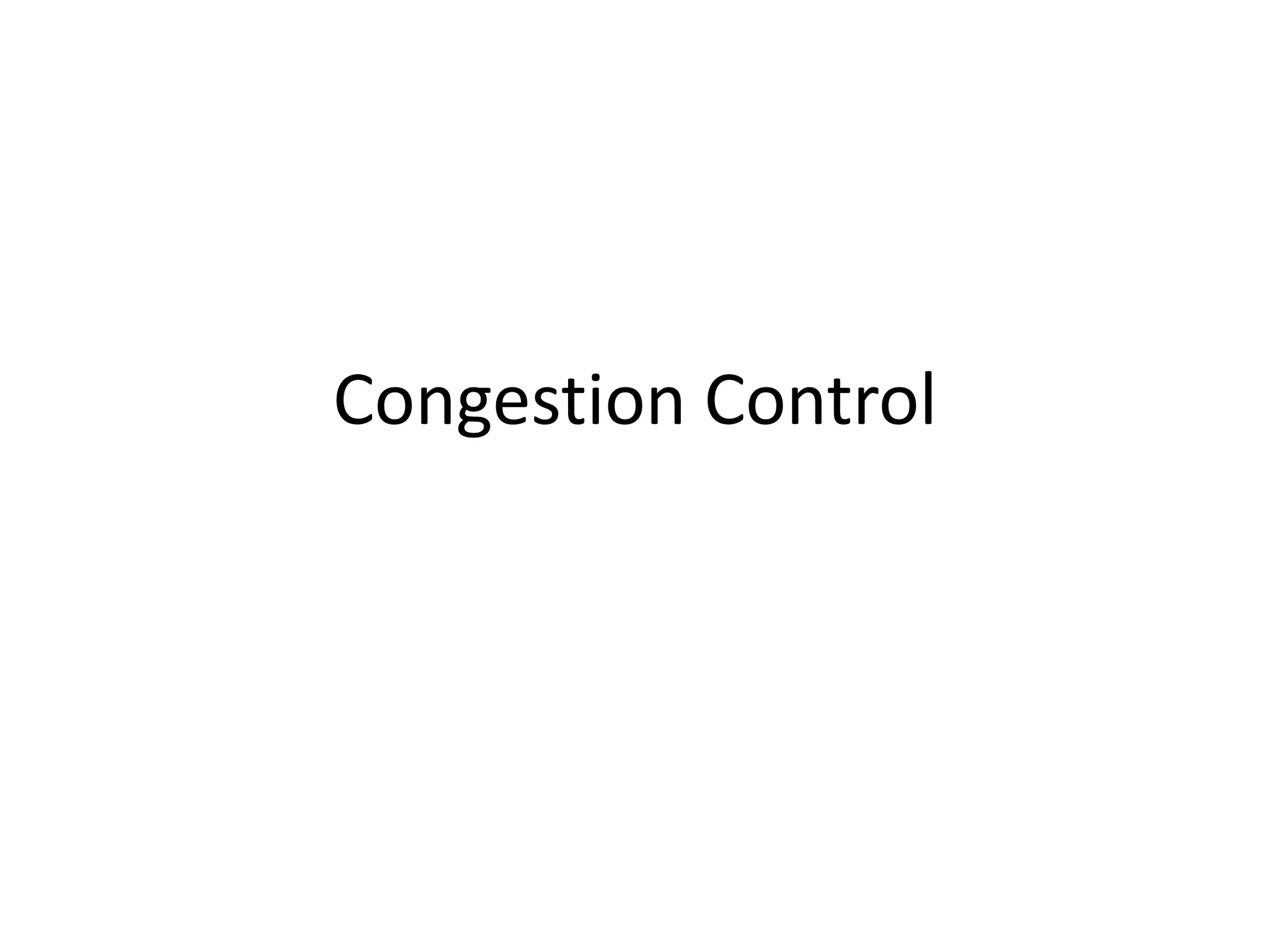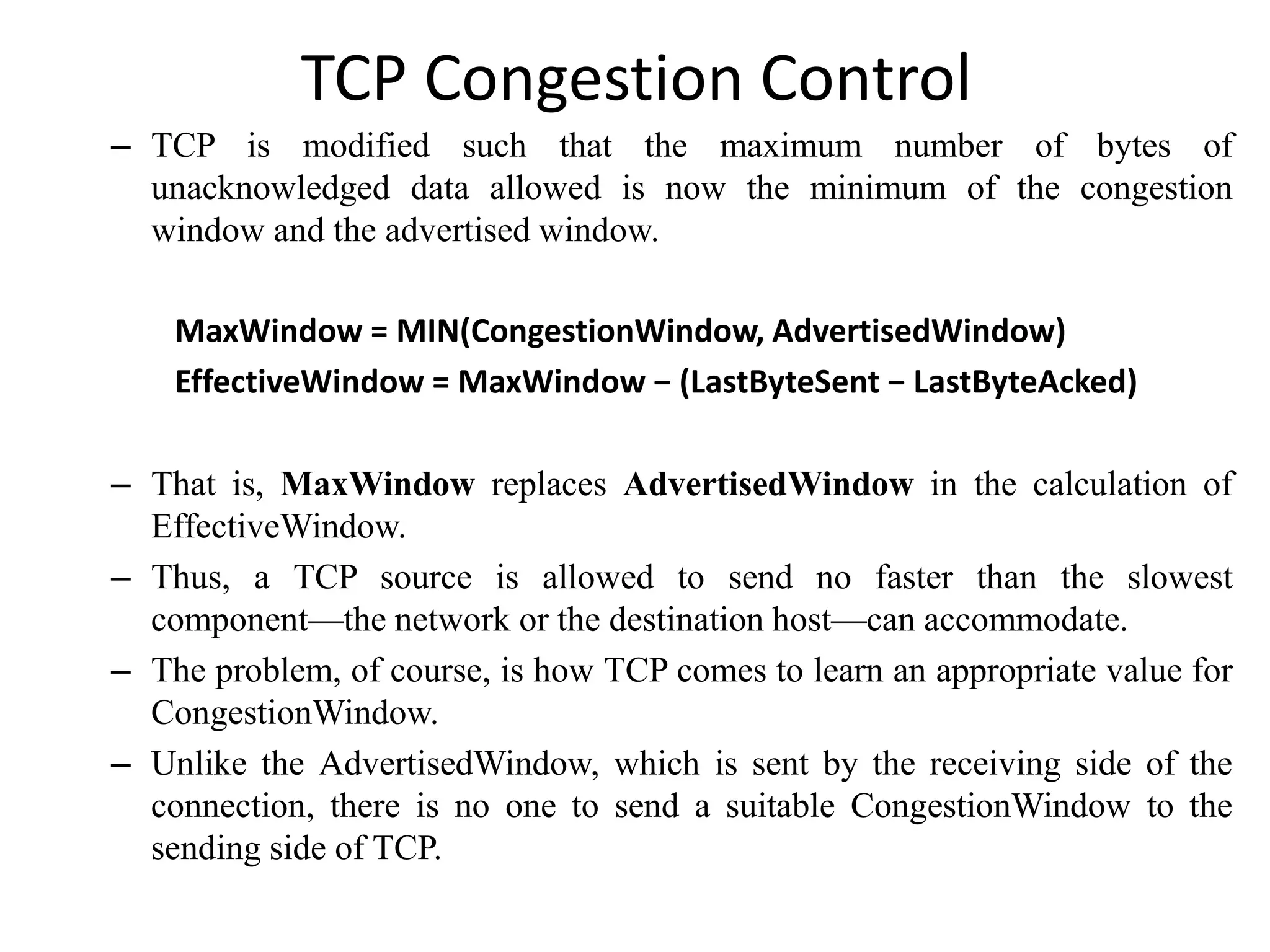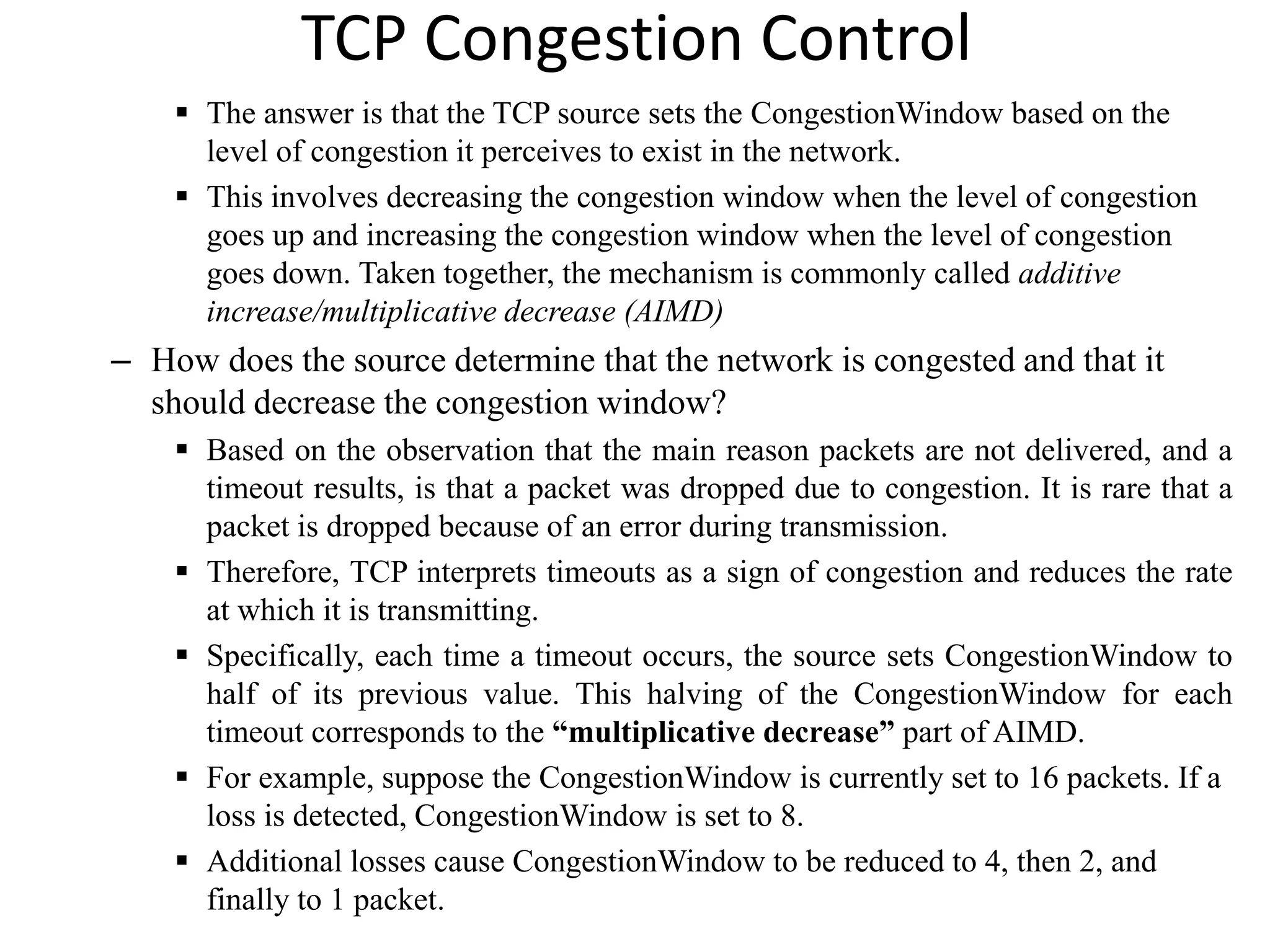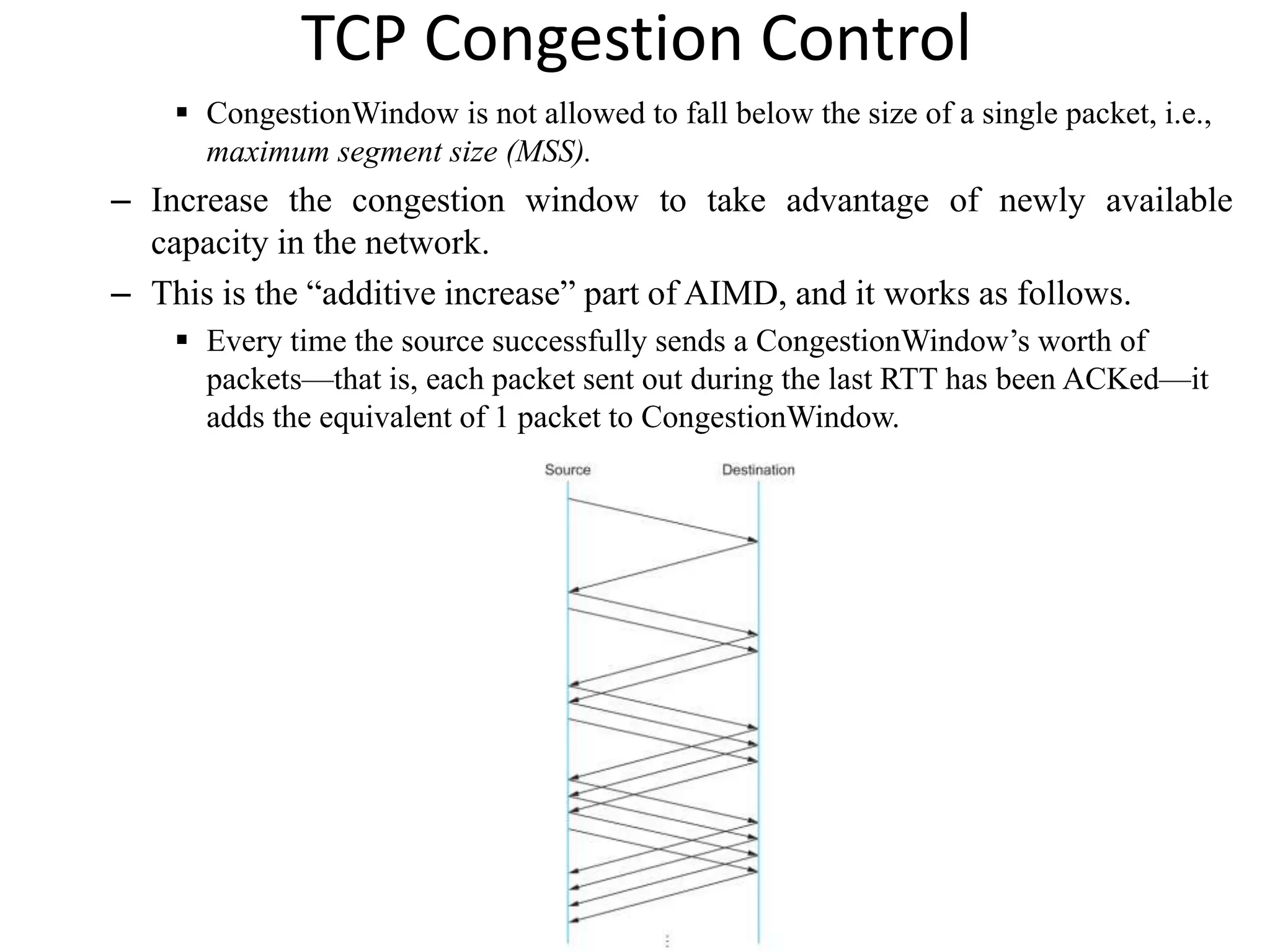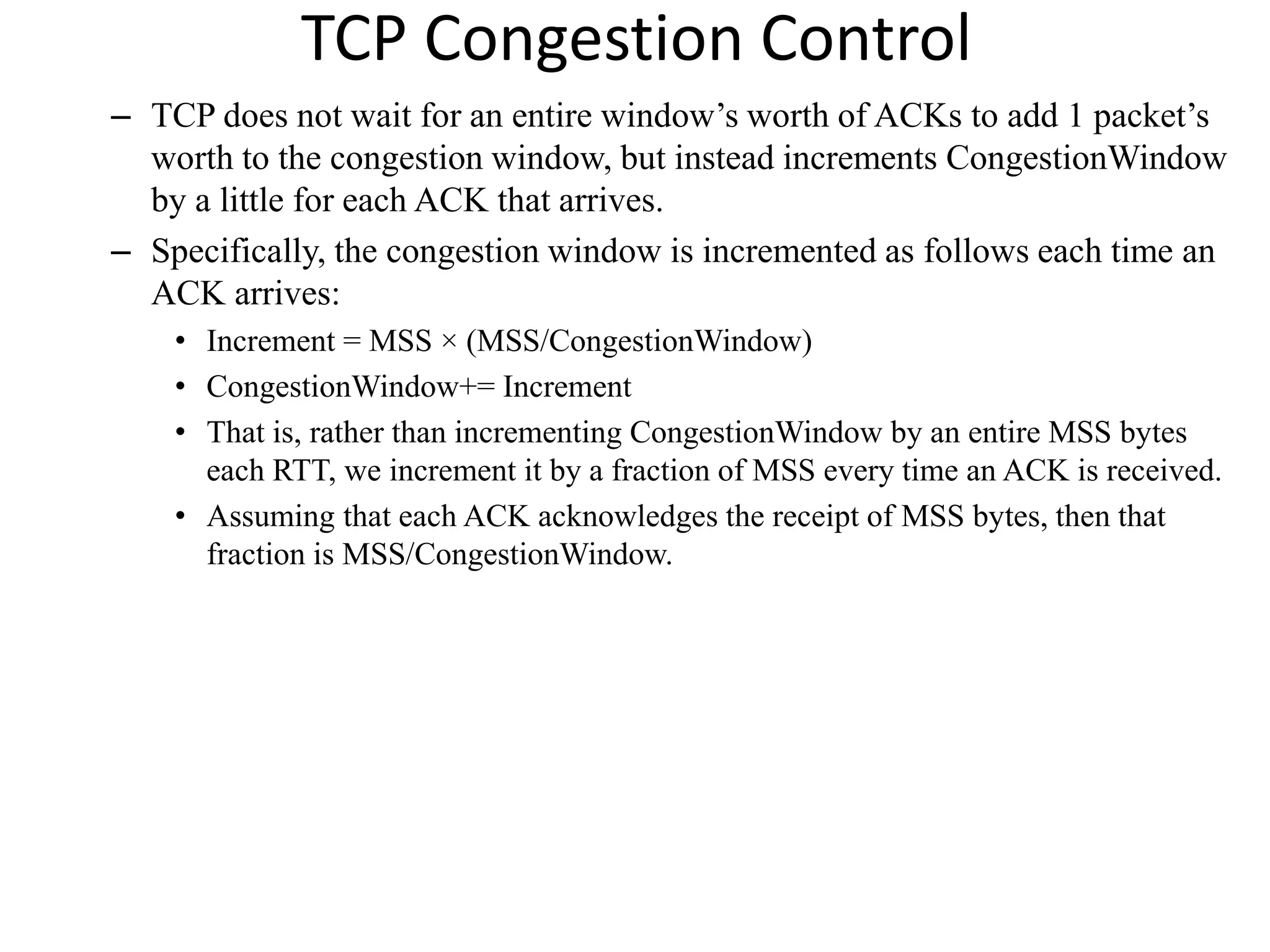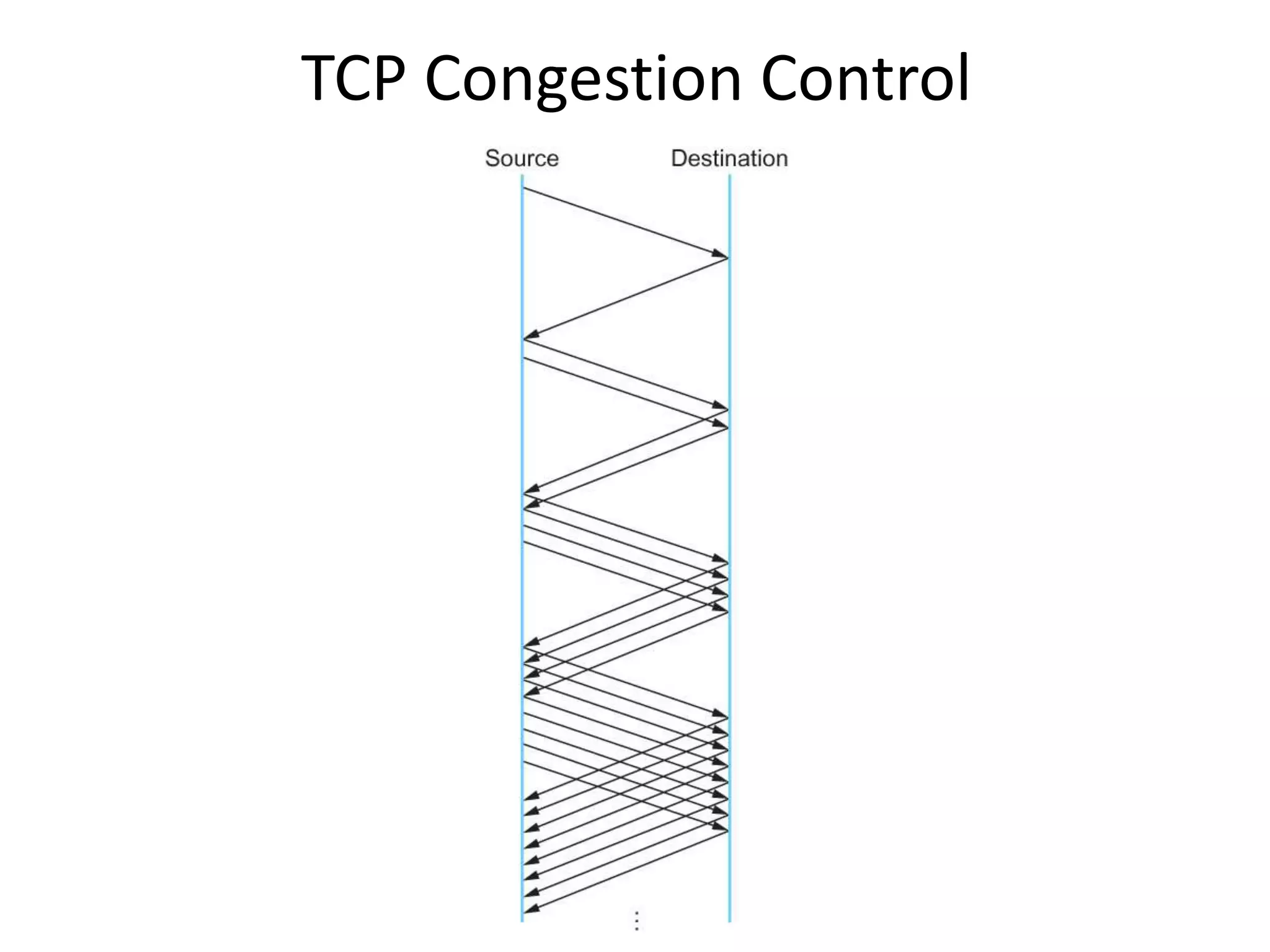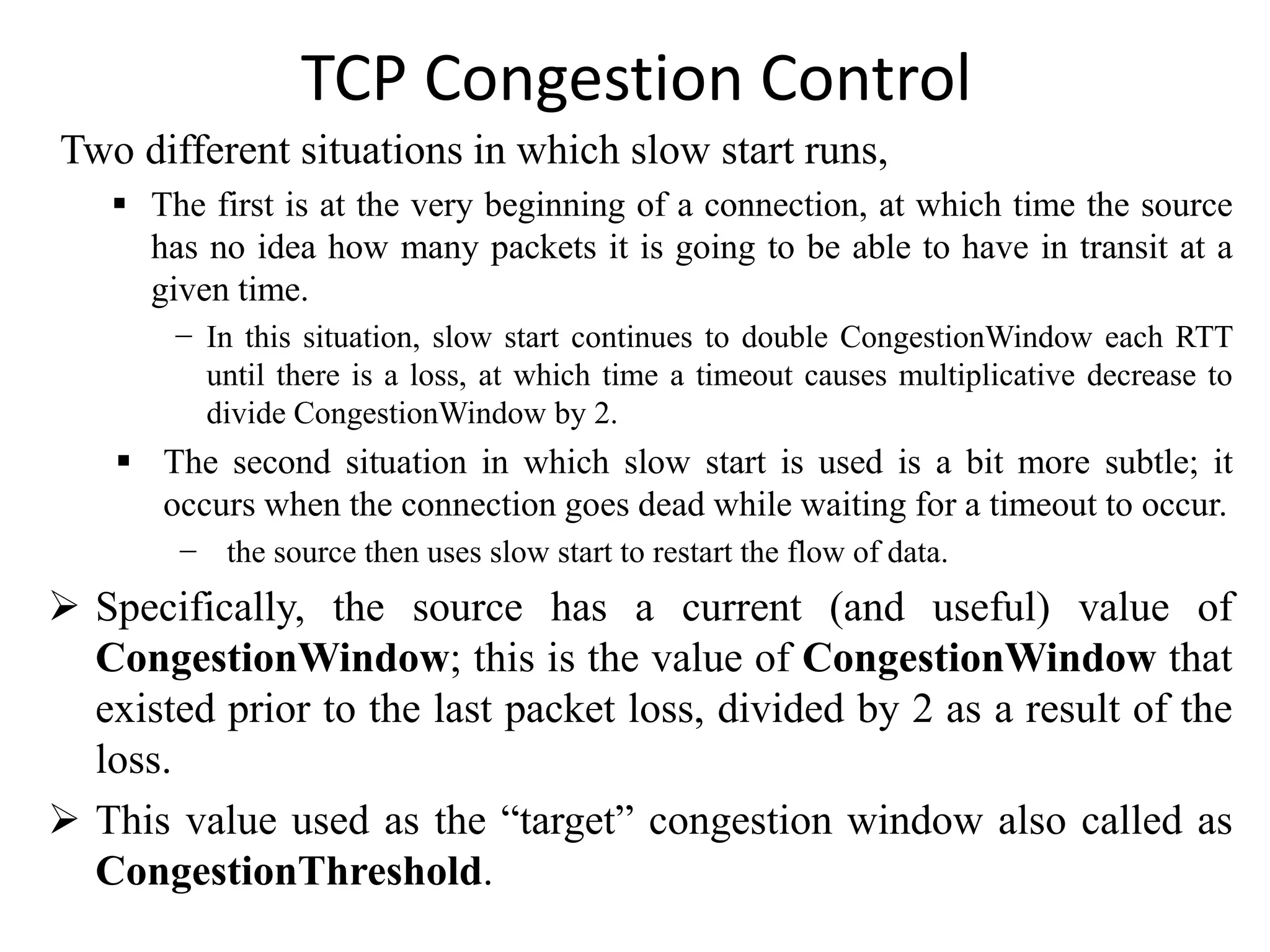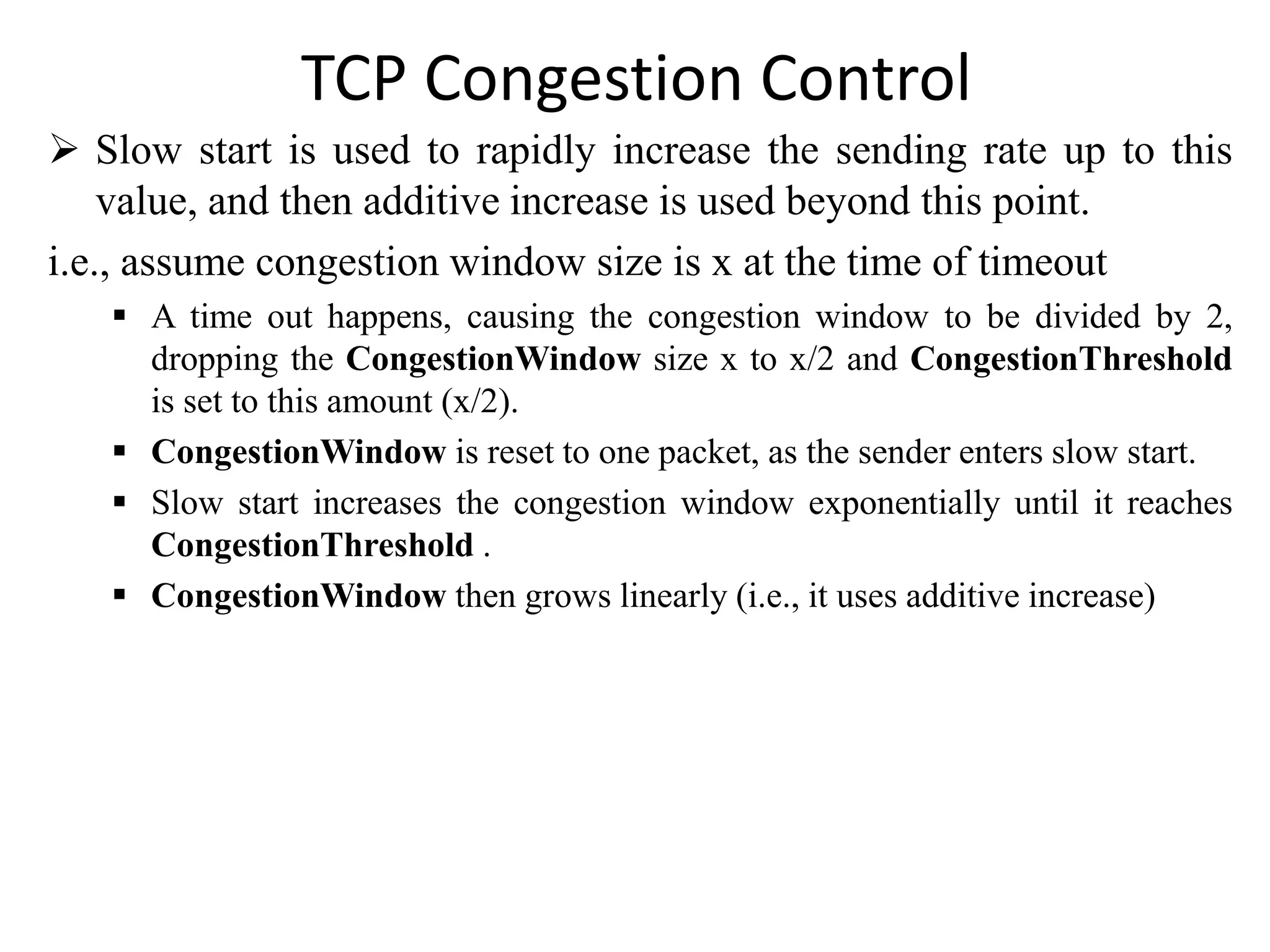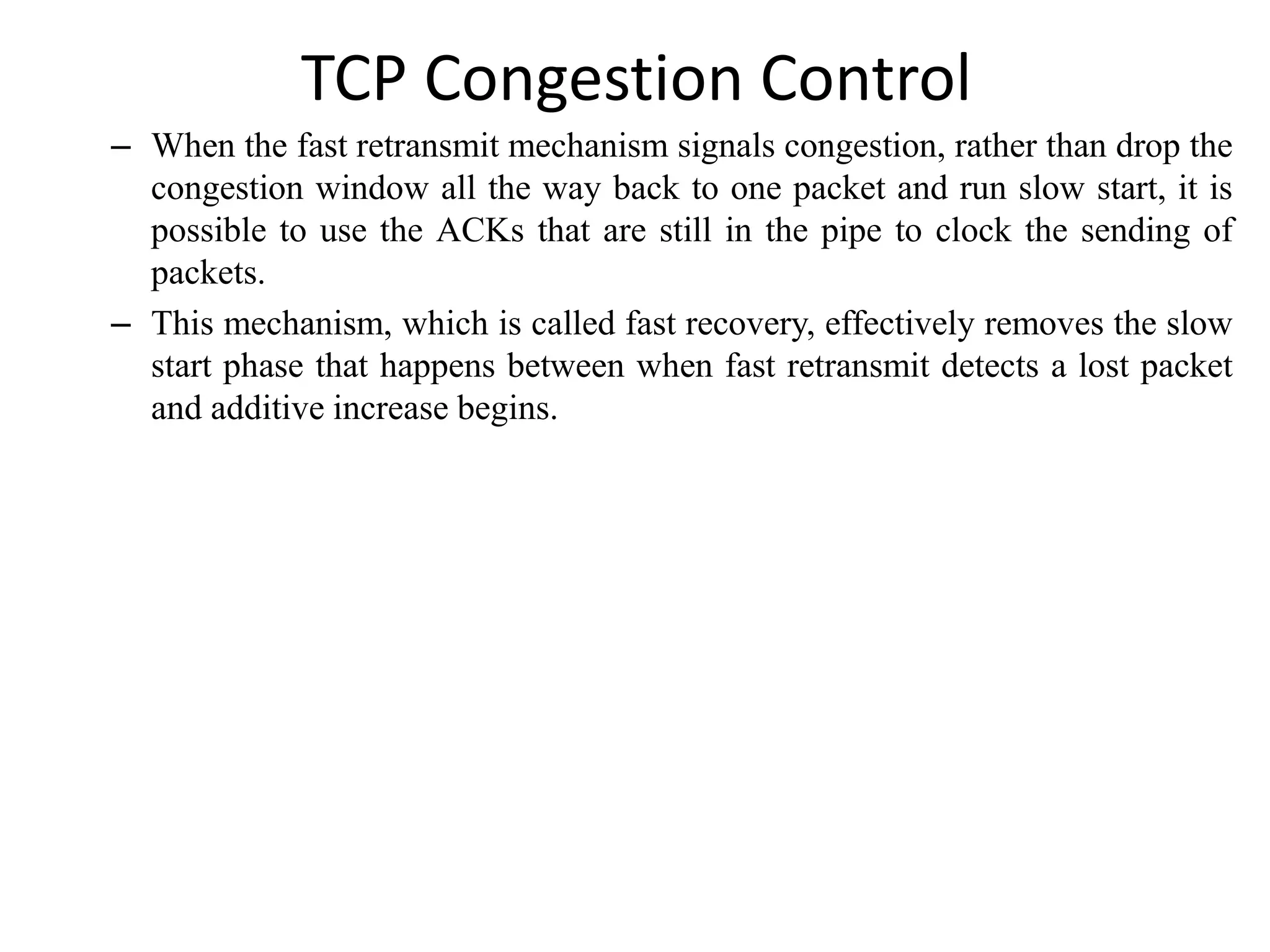TCP uses congestion control to determine how much capacity is available in the network and regulate how many packets can be in transit. It uses additive increase/multiplicative decrease (AIMD) where the congestion window is increased slowly with each ACK but halved upon timeout. Slow start is used initially and after idle periods to grow the window exponentially until congestion is detected. Fast retransmit and fast recovery help detect and recover from packet loss without requiring a timeout.
